Week 02 - Theoretical and Philosophical Foundations to Groups part I
A presentation at Heritage University in January 2021 by Jacob Campbell and is tagged with Heritage University, BASW Program, SOWK 487w
Description
Week two is all about the theoretical and philosophical foundations of working with groups. We review content from Tosland (2017) Chapter 1 - Group Dynamics, Tropman (2017) Chapter 2 - An Ecological/Systems/Seven C’s Perspective on Groups and Smith et al. (2017) Chapter 3 - Social Group Work in a Global Context. We discuss an overview of working with groups, group dynamics, and group roles during this review. We also participate in online group experience.
The agenda for this week is as follows:
- Overview of working with groups
- Group dynamics and roles
- Tools and strategies in groups
Toseland, R. W. (2017). Chapter 01 - Group dynamics. In C. D. Garvin, L. M. Gutierrez, & M. J. Galinsky (Eds.) Handbook of Social Work with Groups (pp. 9-27). The Guilford Press.
Tropman, J. E. (2017). Chapter 02 - An ecological/systems/seven c’s perspective on group practice. In C. D. Garvin, L. M. Gutierrez, & M. J. Galinsky (Eds.) Handbook of Social Work with Groups (pp. 28-42). The Guilford Press.
Smith, R., Bucchio, J., & Turnage, B. F. (2017). Chapter 03 - Social group work in a global context. In C. D. Garvin, L. M. Gutierrez, & M. J. Galinsky (Eds.) Handbook of Social Work with Groups (pp. 43-54). The Guilford Press.
</div>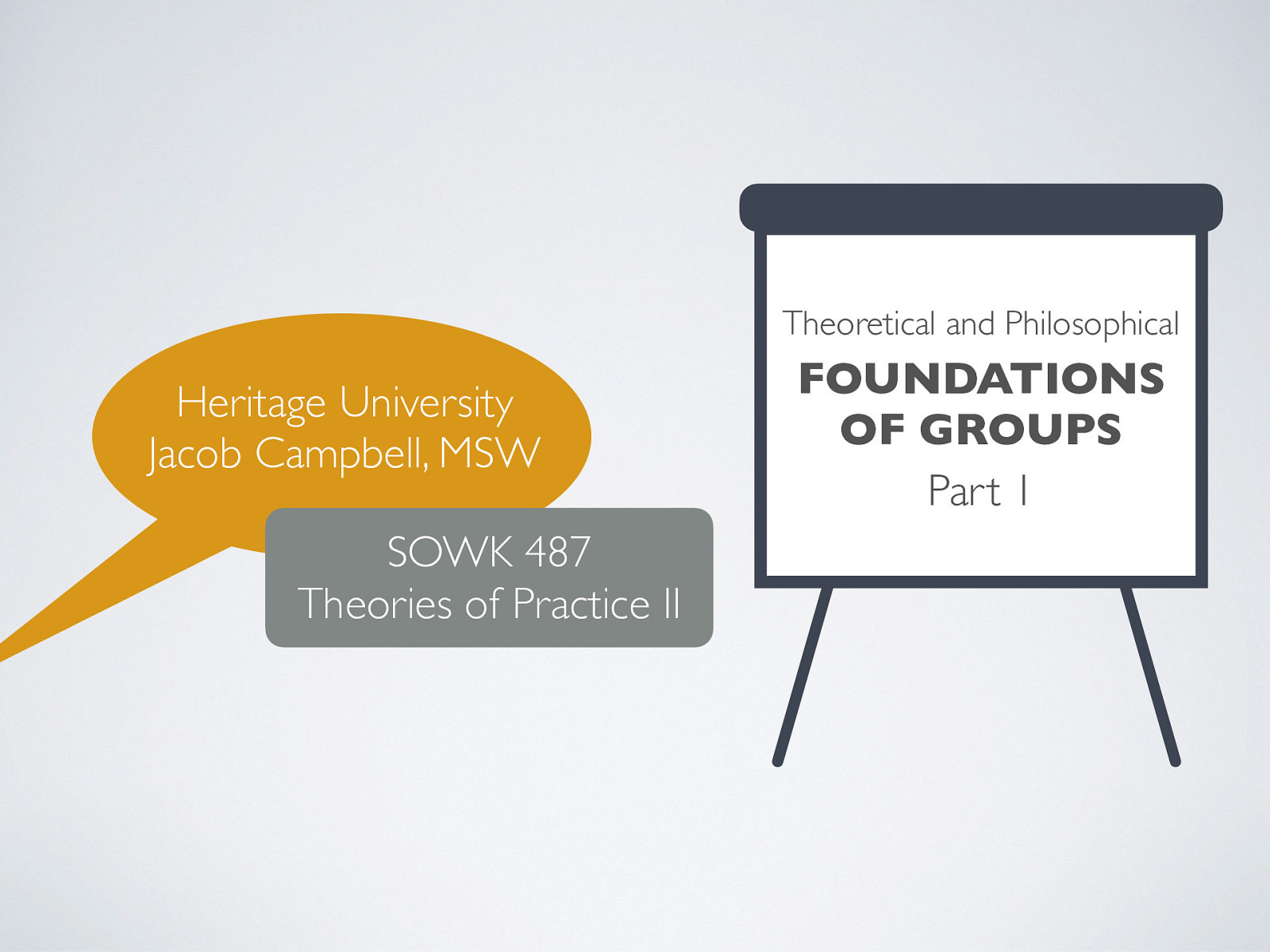
![Often when starting groups, if you just ask how people are doing, they will not answer or it will be “ok” if pressed. In class, I tend to ask you to give a simple rating scale (thumbs up to thumbs down). Another way to make it concrete and solit more convesation is to make it abstract. [Whole Class Activity] As I go through and do attendance, please share how you would describe your day if it was an animal. You can also pass if you need to Spend time talking about other options for this type of simple activity.](https://presentations.jacobrcampbell.com/xFnMol/deck-6239-large-1.jpeg)
![What are groups used for in social work practice? We are going to watch a clip from a movie, Fight Club. There is some strong language and themes. We are only going to watch about 5 - 10 minutes. You can feel free to step out if you might be easily offended. [Activity] Watch scene from Fight Club (5:41-12:26) Discuss some scenes from support groups in movies https://tubitv.com/movies/565391/fight-club](https://presentations.jacobrcampbell.com/xFnMol/deck-6239-large-2.jpeg)
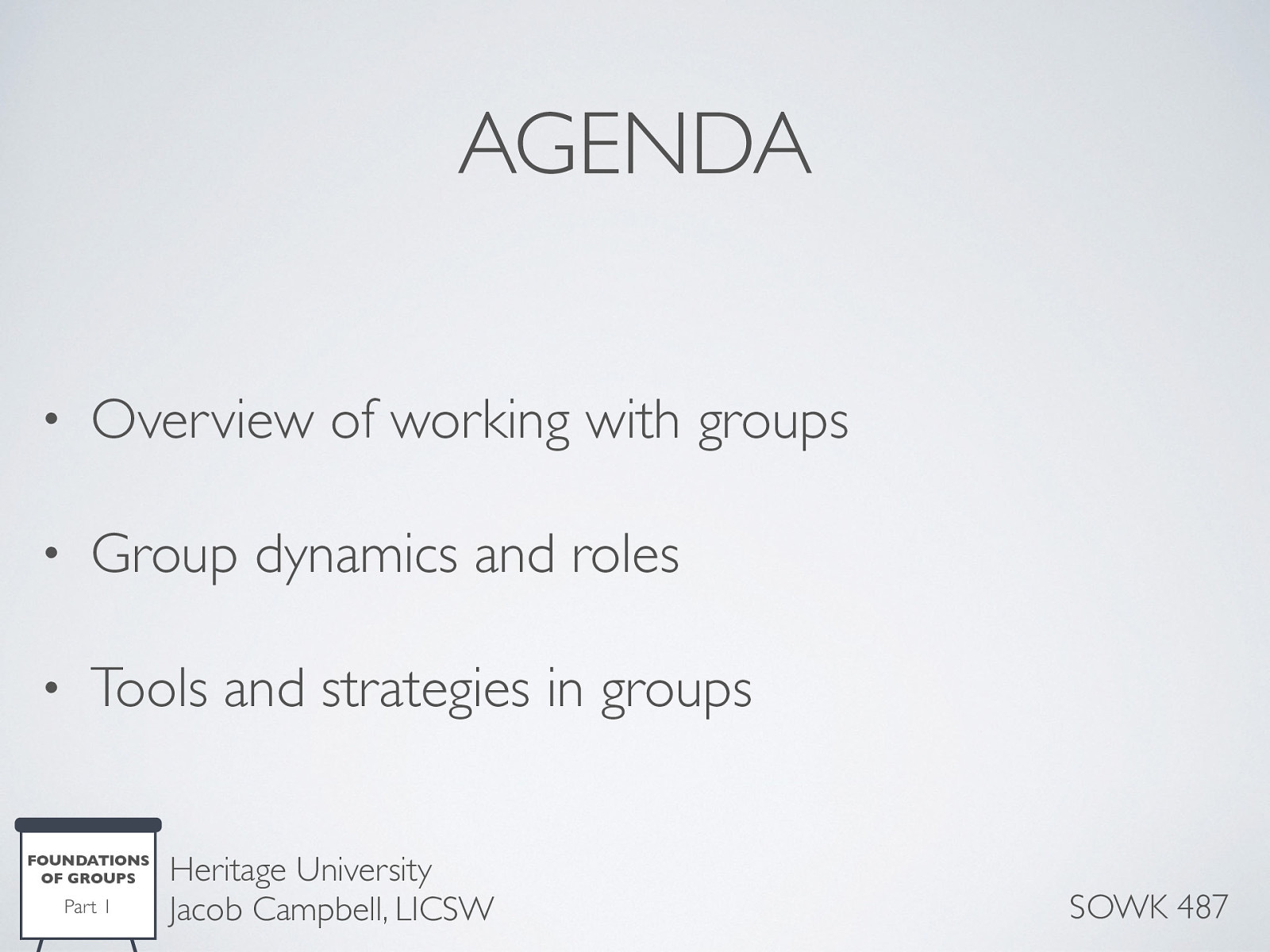
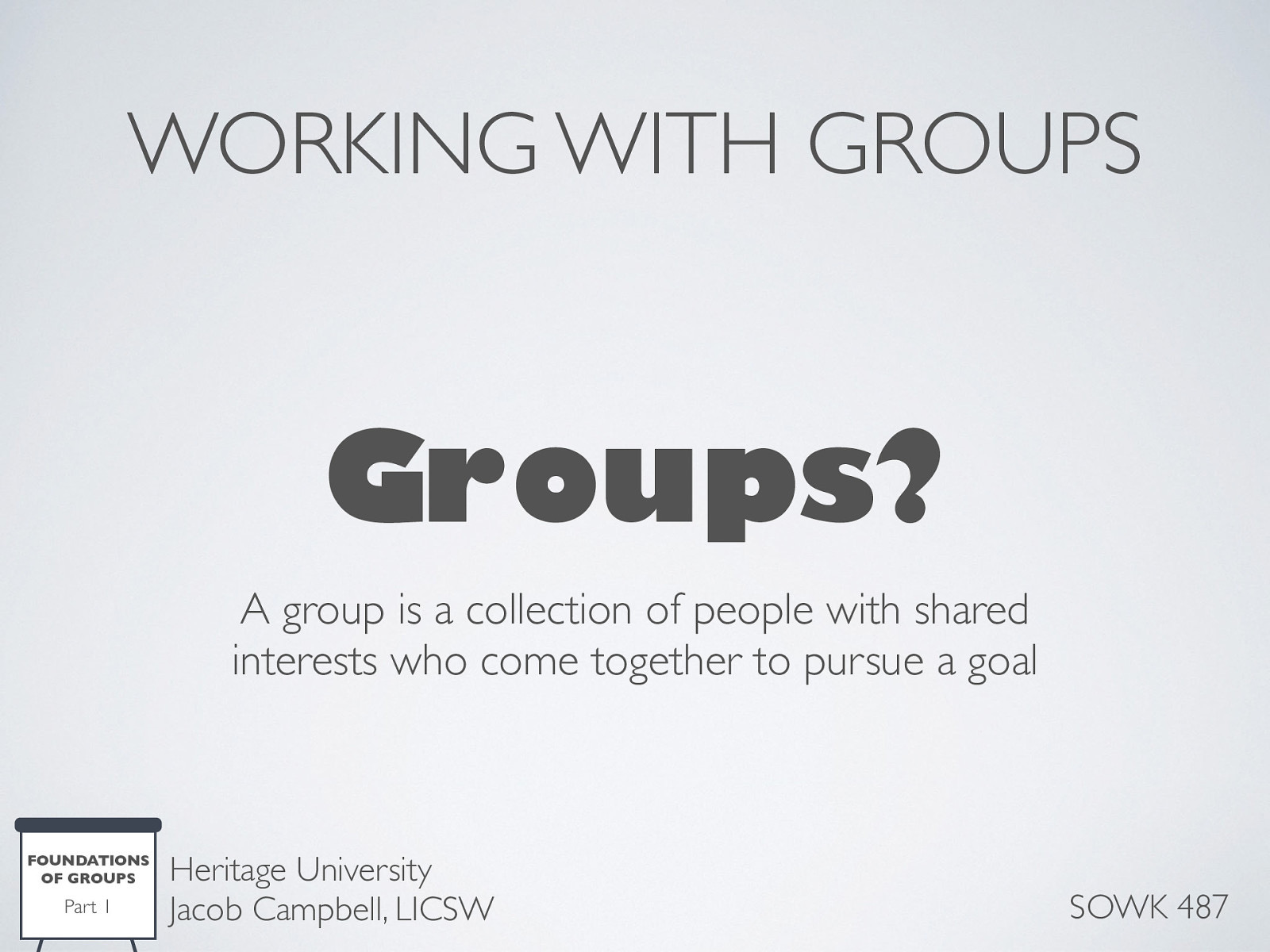
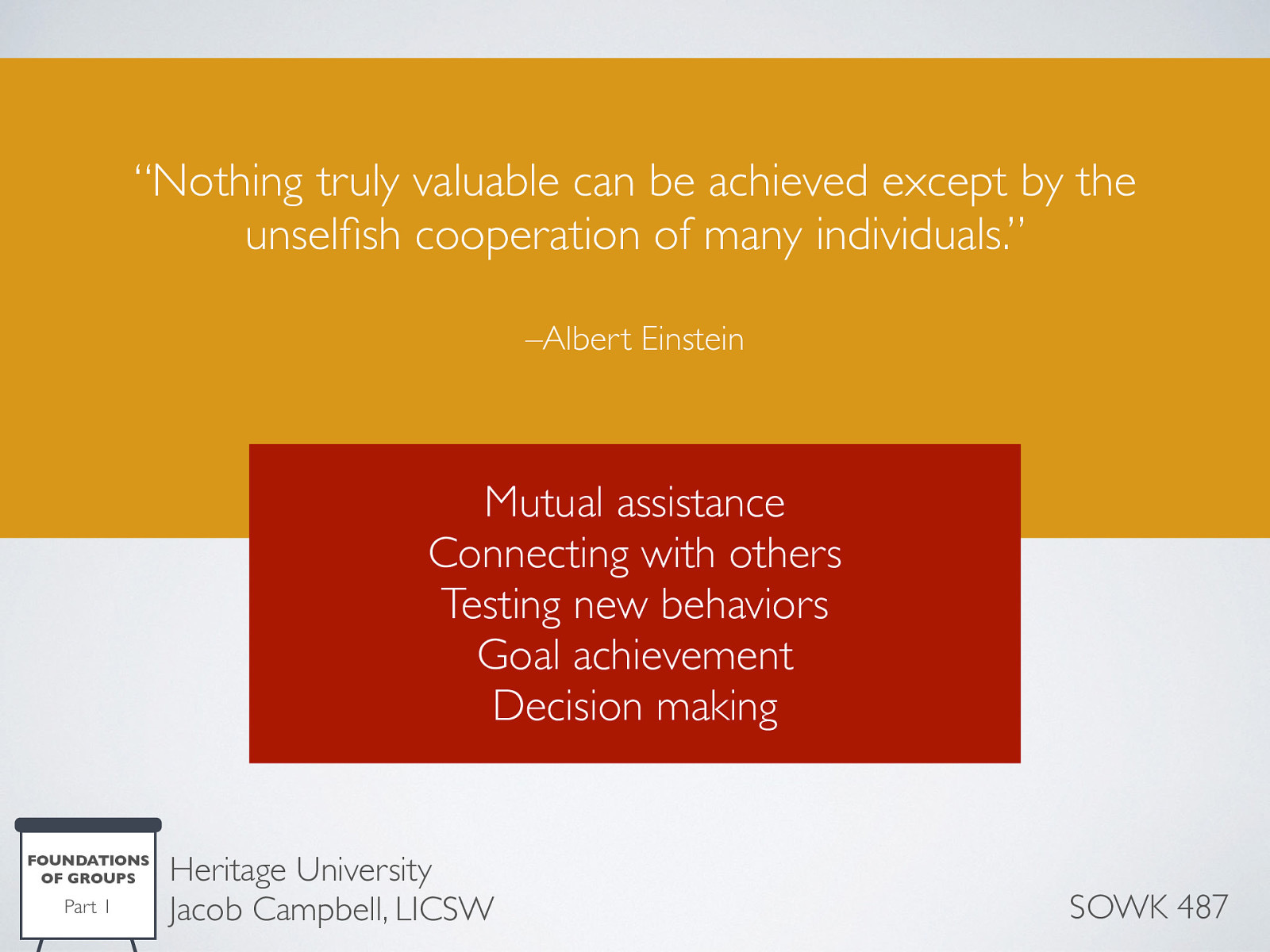
![There are two main types of groups, task groups, and treatment groups. [Discussion] What types of groups have you been involved with or seen [Discussion] What is a local example of each group? Treatment Groups The type most of us think about is treatment groups. These are any groups where the primary focus is on member’s emotional and social needs. Growth Group: Designed to encourage and support the growth of the individual group member. They focus on helping individuals achieve their potential and building their strengths. i.e. women in a DV shelter. Therapy Groups: Help clients who have an identified goal of changing some aspects of their behavior or thinking. The objective is recovering from problematic life experiences. i.e.; victims of abuse. Educational Groups: The purpose is to educate or teach the group members about some issue or topic. i.e.; parenting group Socialization Group: Assist participants in acquiring skills necessary to become socialized into the community. The presumption is that the group members have a deficit of some sort of social skills. i.e.; teenagers with delinquent behavior. Support Groups: People sharing certain characteristics who get together to provide one another with emotional sustenance, encourage new coping mechanisms, and allow a strengths-based sharing of issues, concerns, and problems.](https://presentations.jacobrcampbell.com/xFnMol/deck-6239-large-6.jpeg)
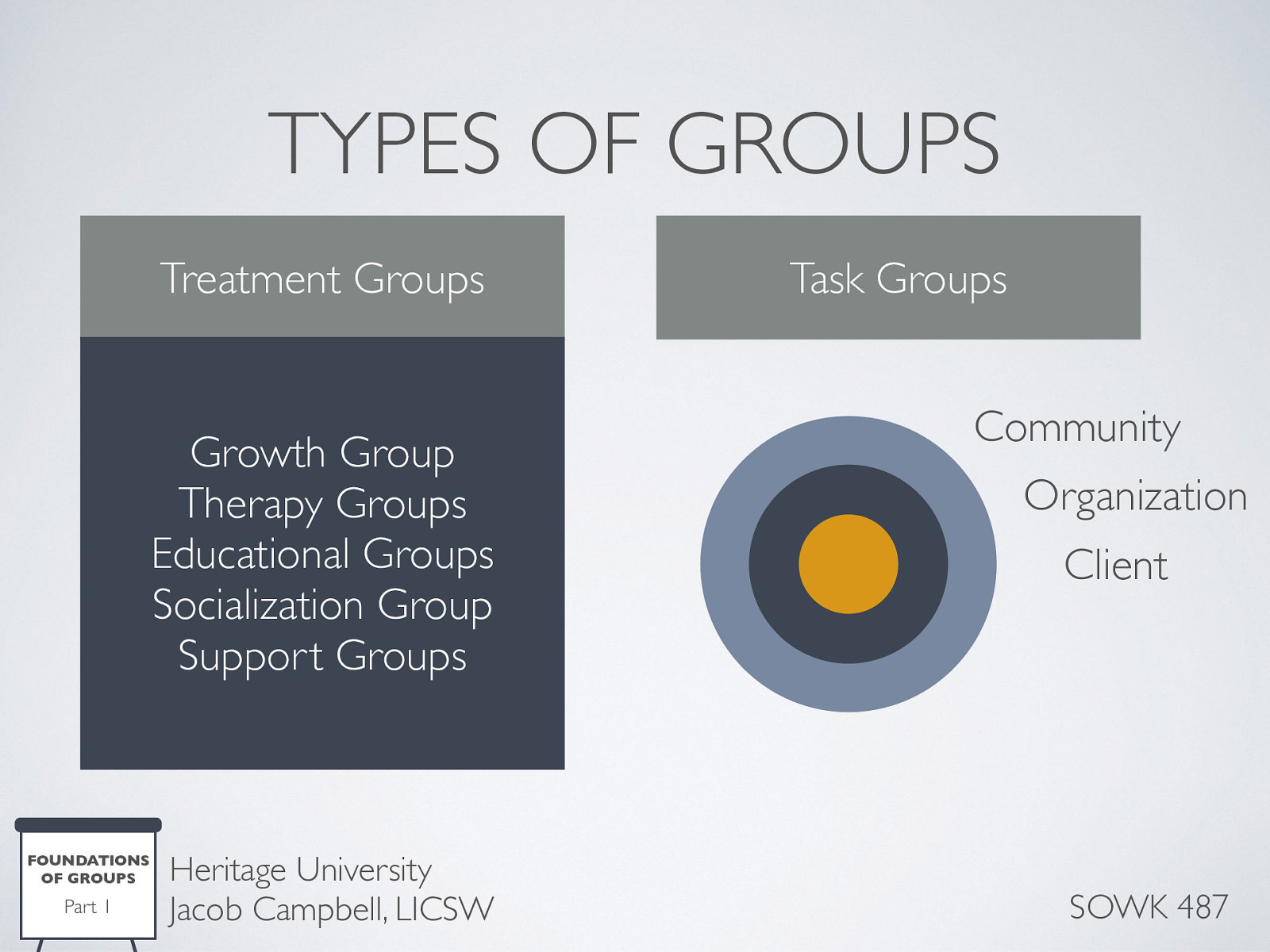
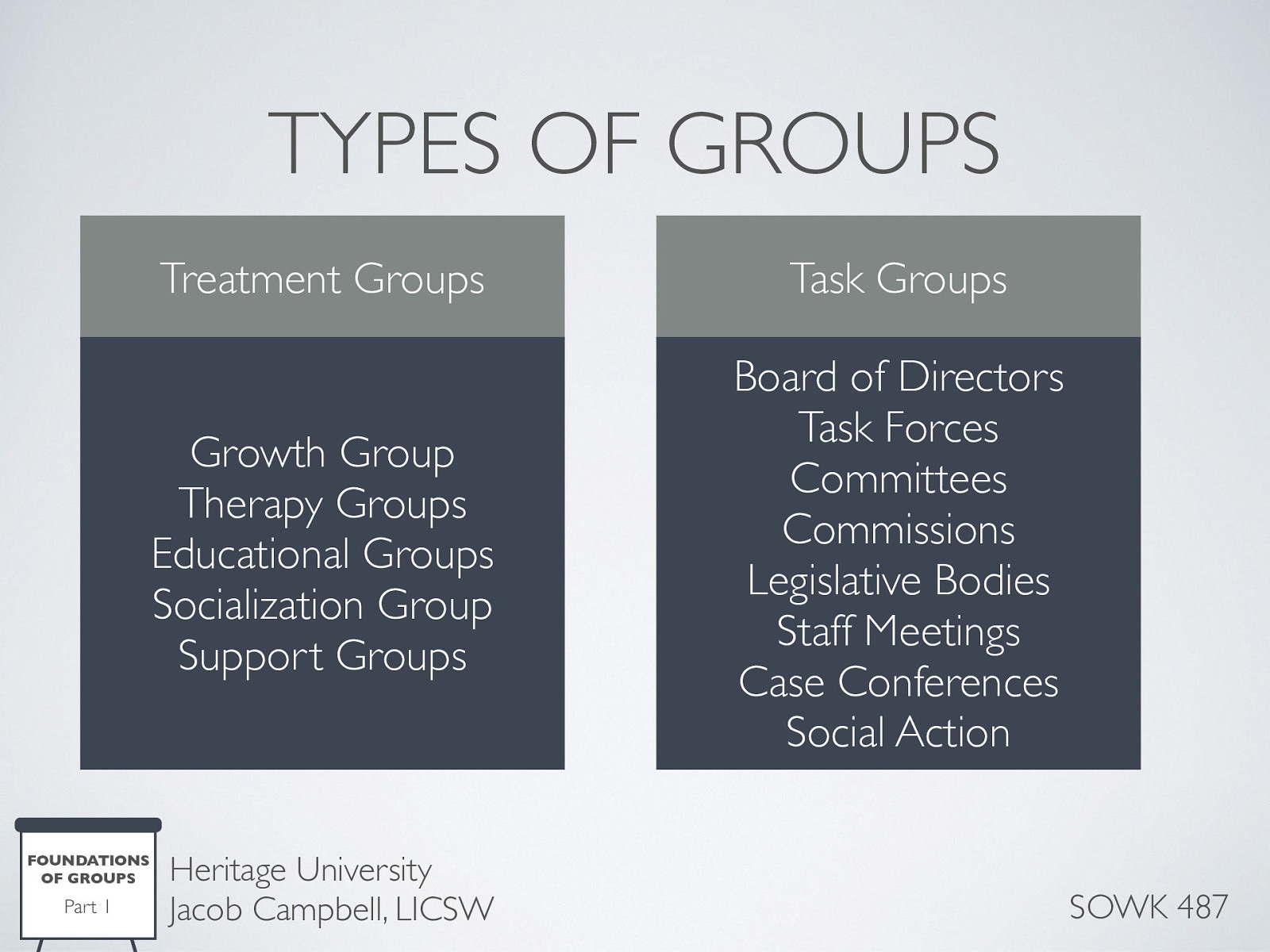
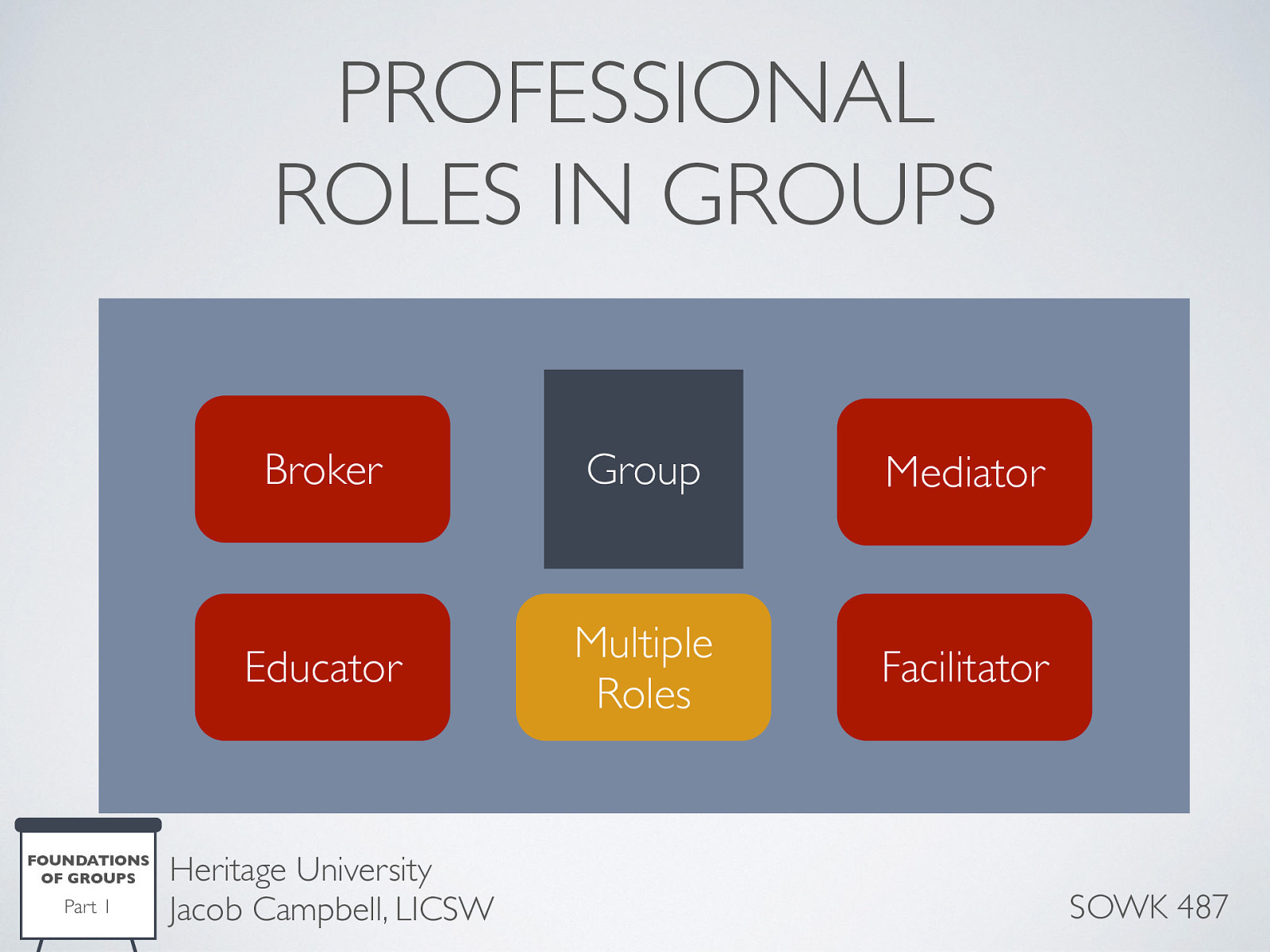
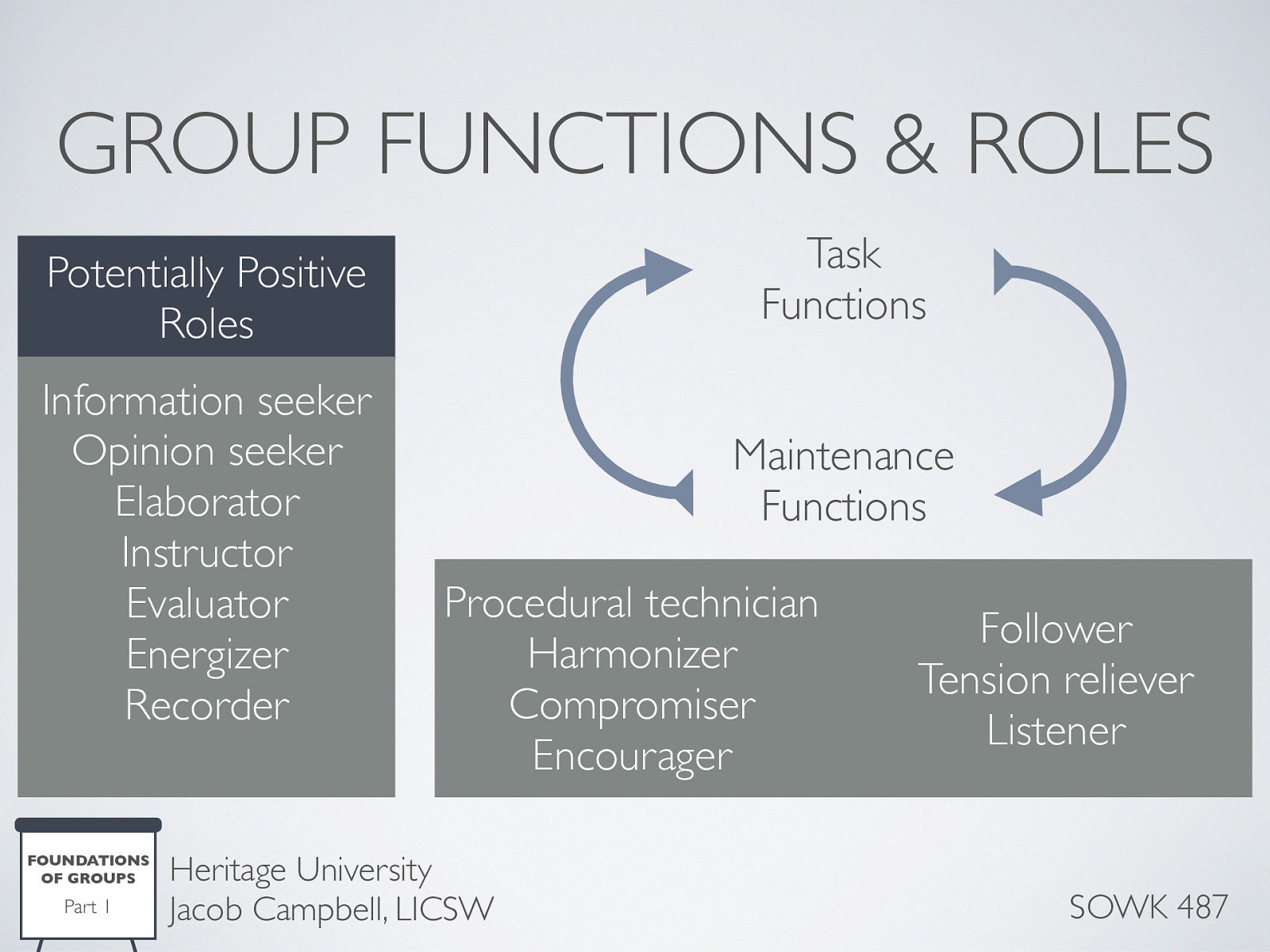
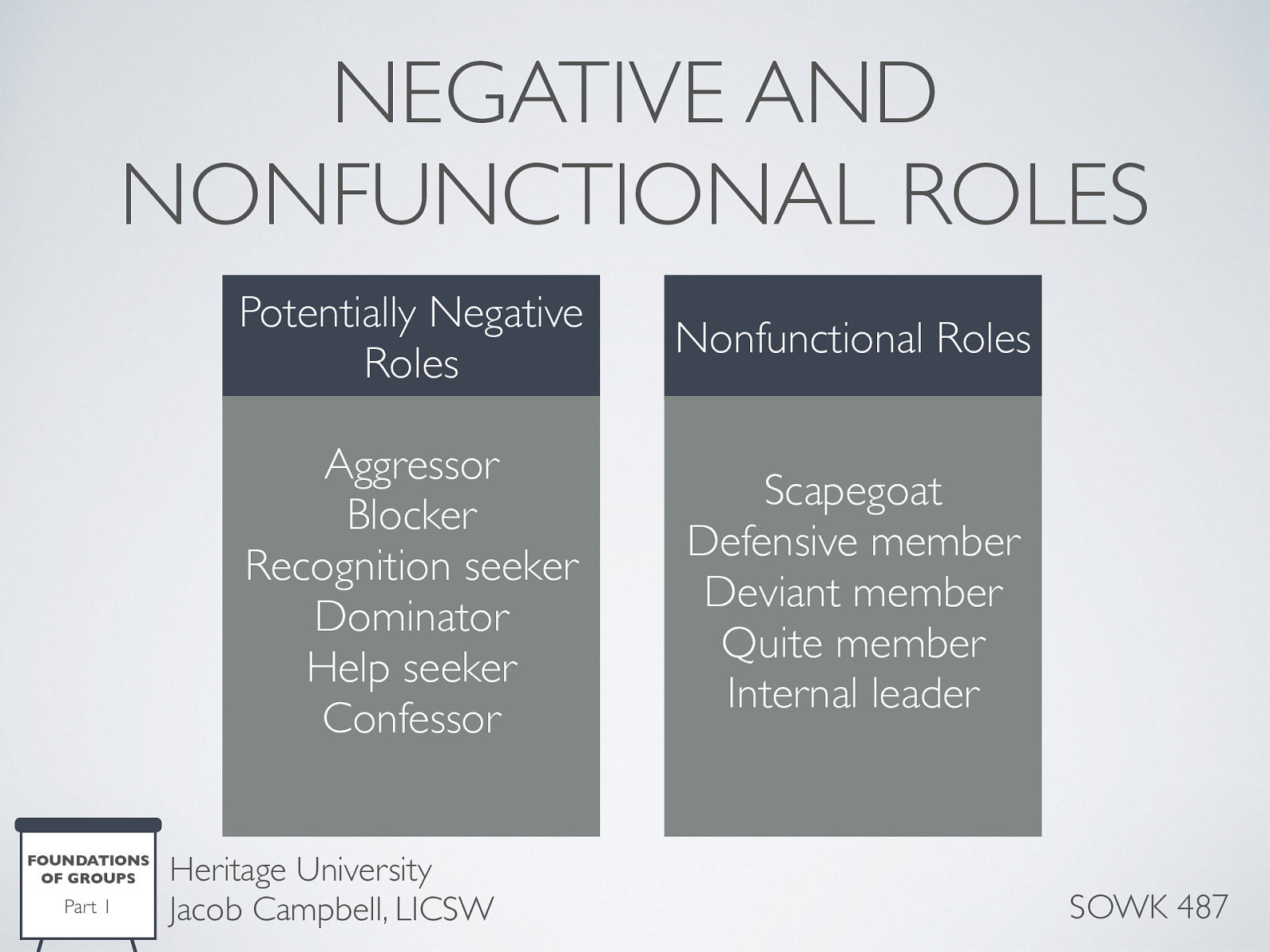
![When a group has a general, expected format (whether you are looking at a treatment group or a task group), it helps all of the members have an idea of what to expect and for it to be easier to create norms. When I was at the Crisis Residential Center in Spokane, I frequently led groups for the youth staying there. I had a general format that I would always follow: Review the rules Check-in question Fun engaging activity Work on a specific topic or skill [Activity] Have all students move desks into a circle. Go through the first three steps of the group. We are going to go through a part of a group exercise to see what it can look like. We will role-play as if this is a therapeutic group working on communication skills. Determine Group Rules If any of you have every part, sometimes it can be a little bit difficult… one way that we can make it a little bit easier is to set up some ground rules for while we are at the group. Does anybody have any suggestions about possible rules for our group sessions? Elicit ideas Write on the board Review them Thank the group Check-in Question If you could describe your day today as an animal, any animal… what would it be today and why? Ask check-in question (highs and lows today) Follow up on some of the group members and why they picked what they picked Activity Today, we are going to do a pretty fun activity. It is kind of like telephone, but… completely different… Picture is worth a 1,000 words Description: Variation of telephone. Each group member is given a piece of paper. They are instructed to write a short phrase on their paper. The paper is passed to the next person. That person is instructed to draw a picture of the phrase. Before they pass their picture to the next person they fold and cover the written statement directly above. This process is repeated until papers get back to the original writer. Purpose: The phrase to drawing changes what the writer intended. This often happens when we communicate. Skill Today we are going to be talking about communication. What did we see when we did the activity? How could that relate to how we communicate? Debrief What did you see and not see? What did you see in my facilitation of the group What worked, what didn’t Is this something you could imagine doing in a group?](https://presentations.jacobrcampbell.com/xFnMol/deck-6239-large-12.jpeg)
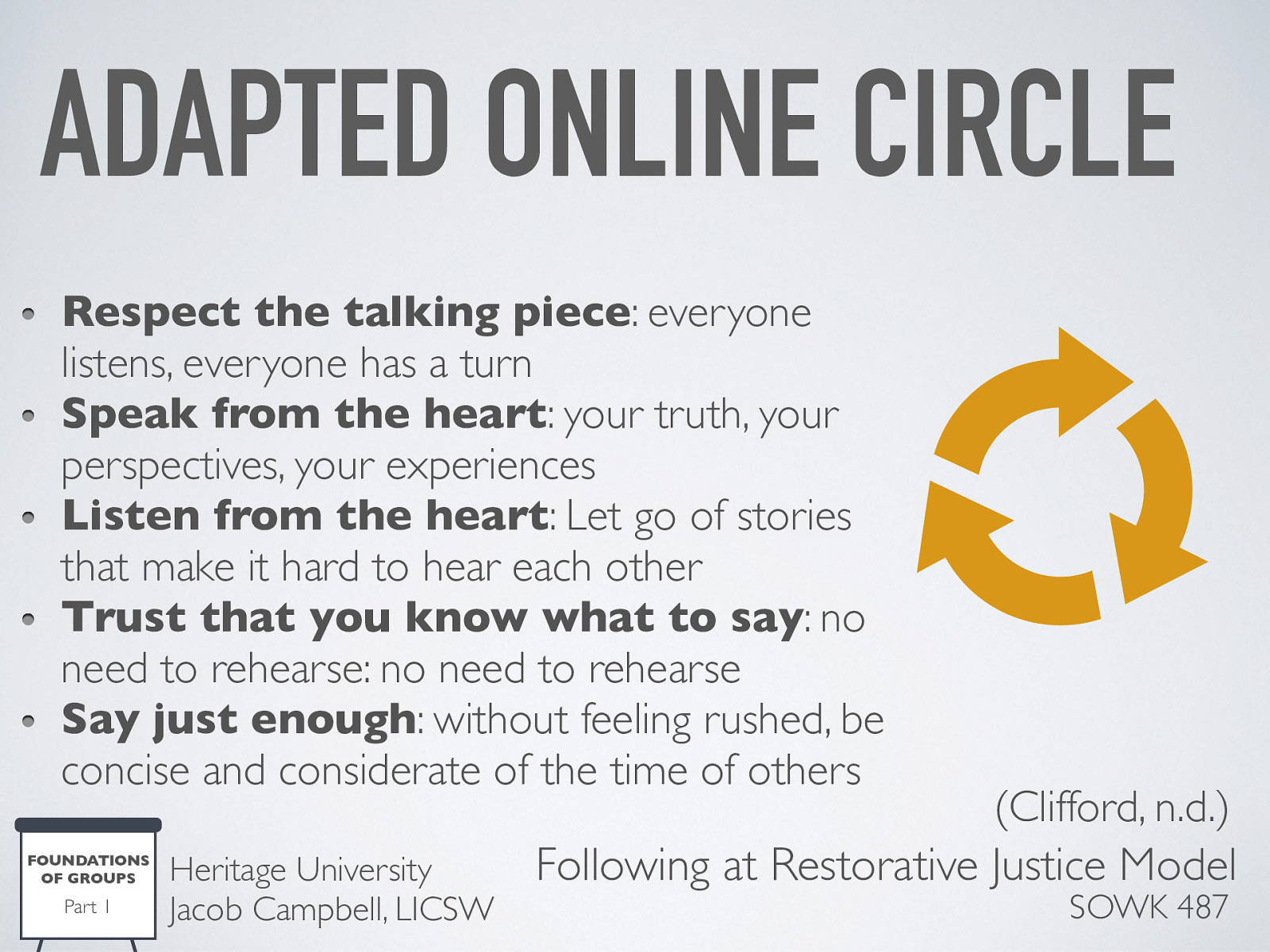
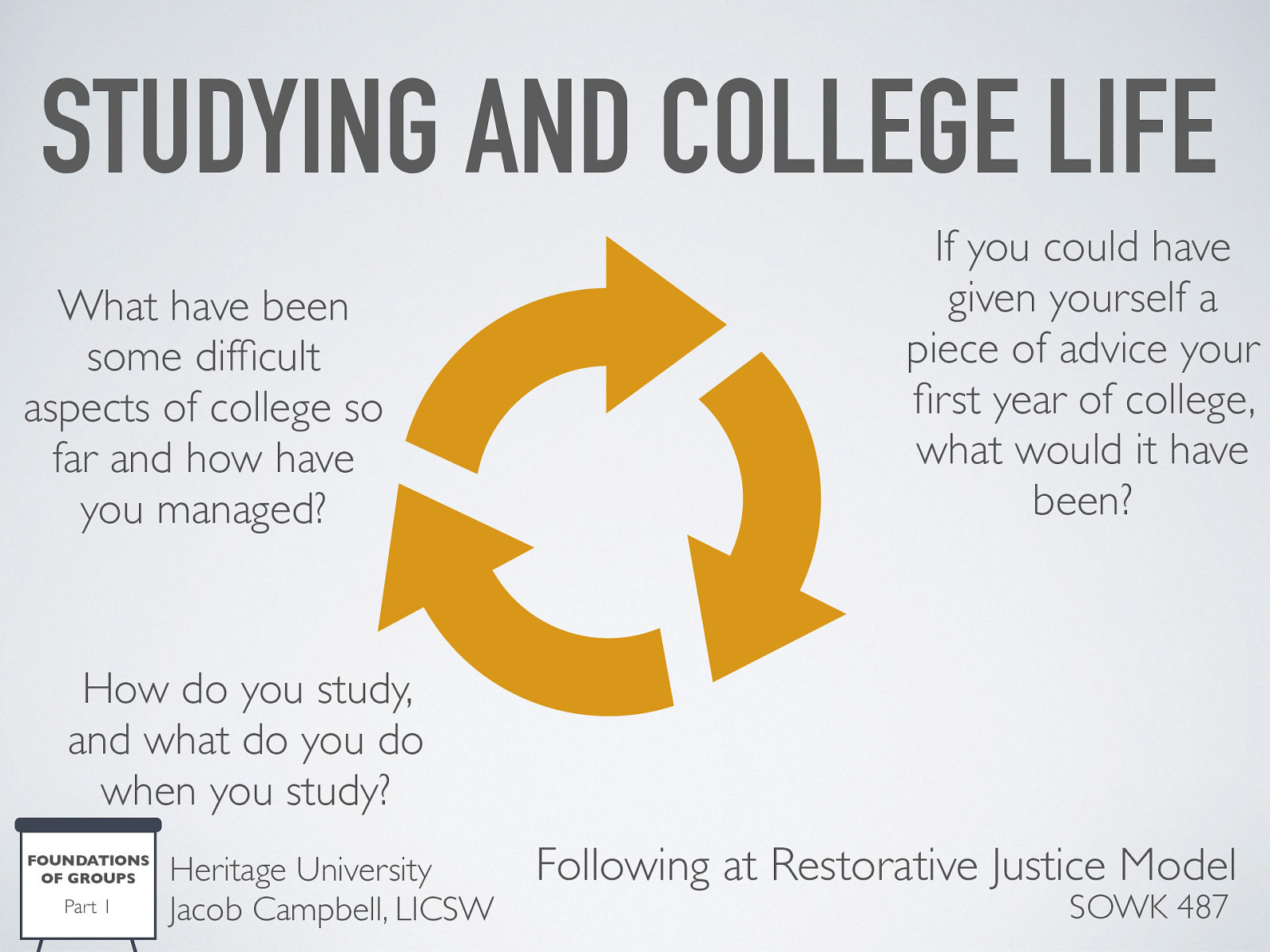
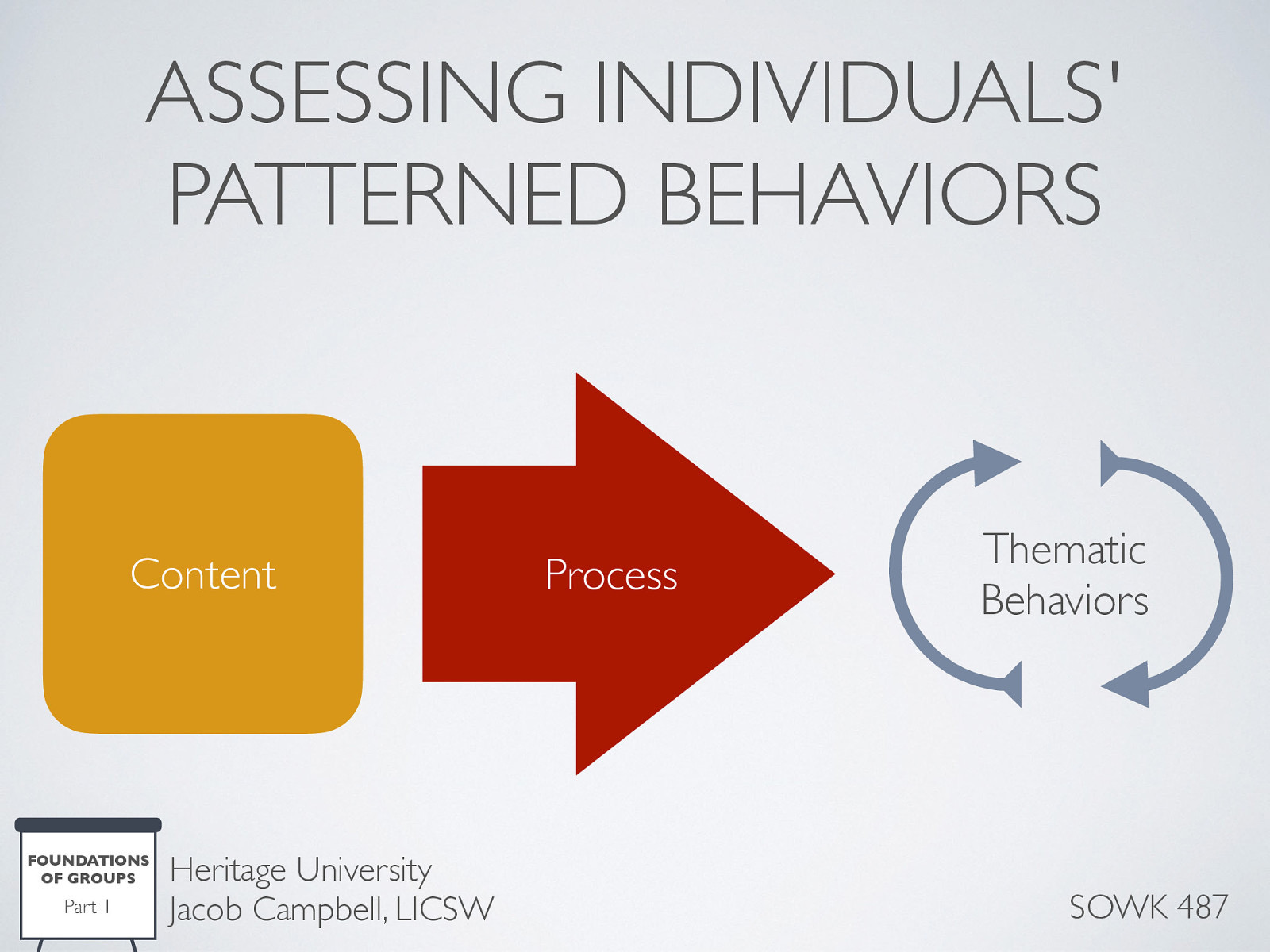
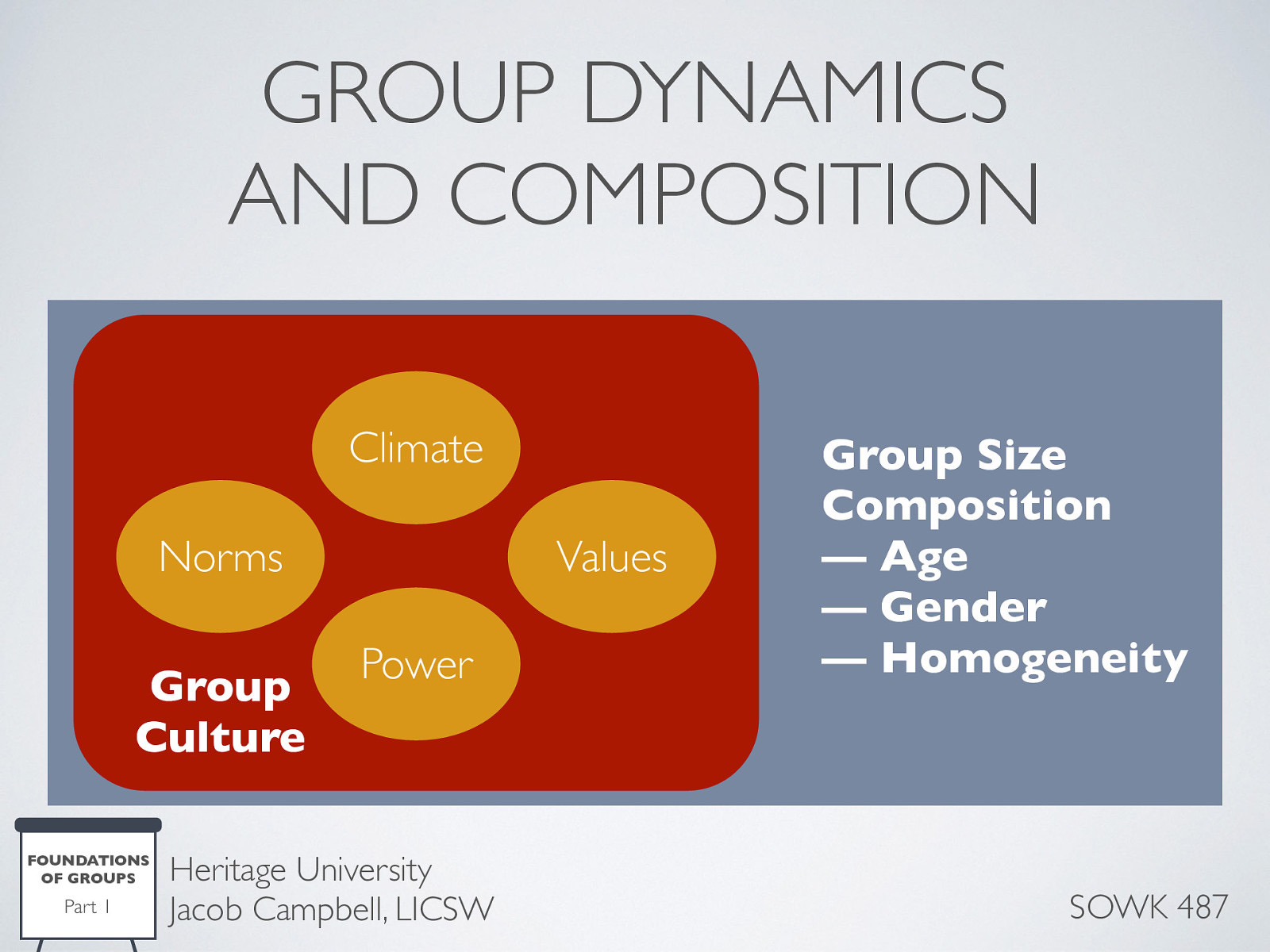
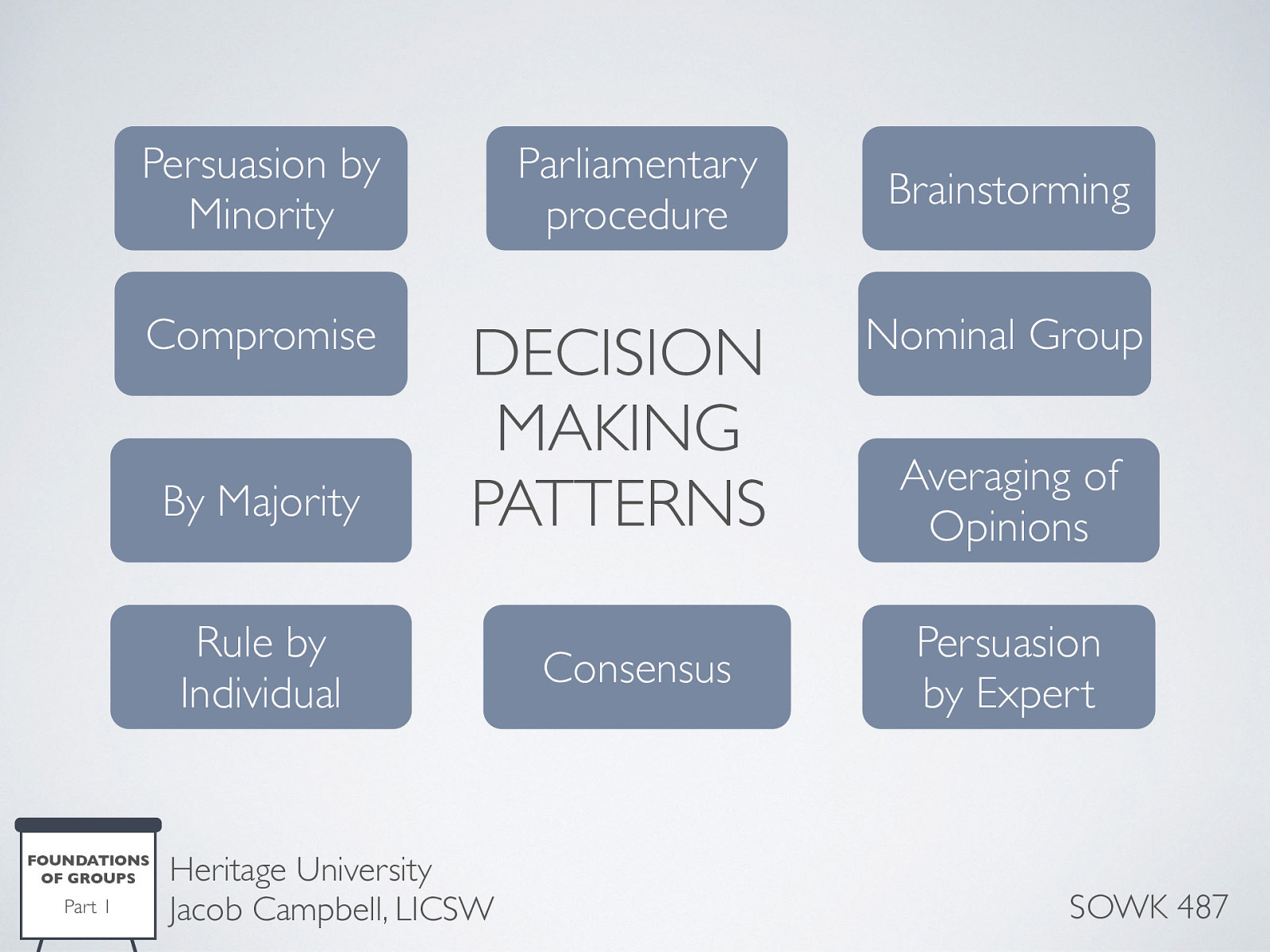
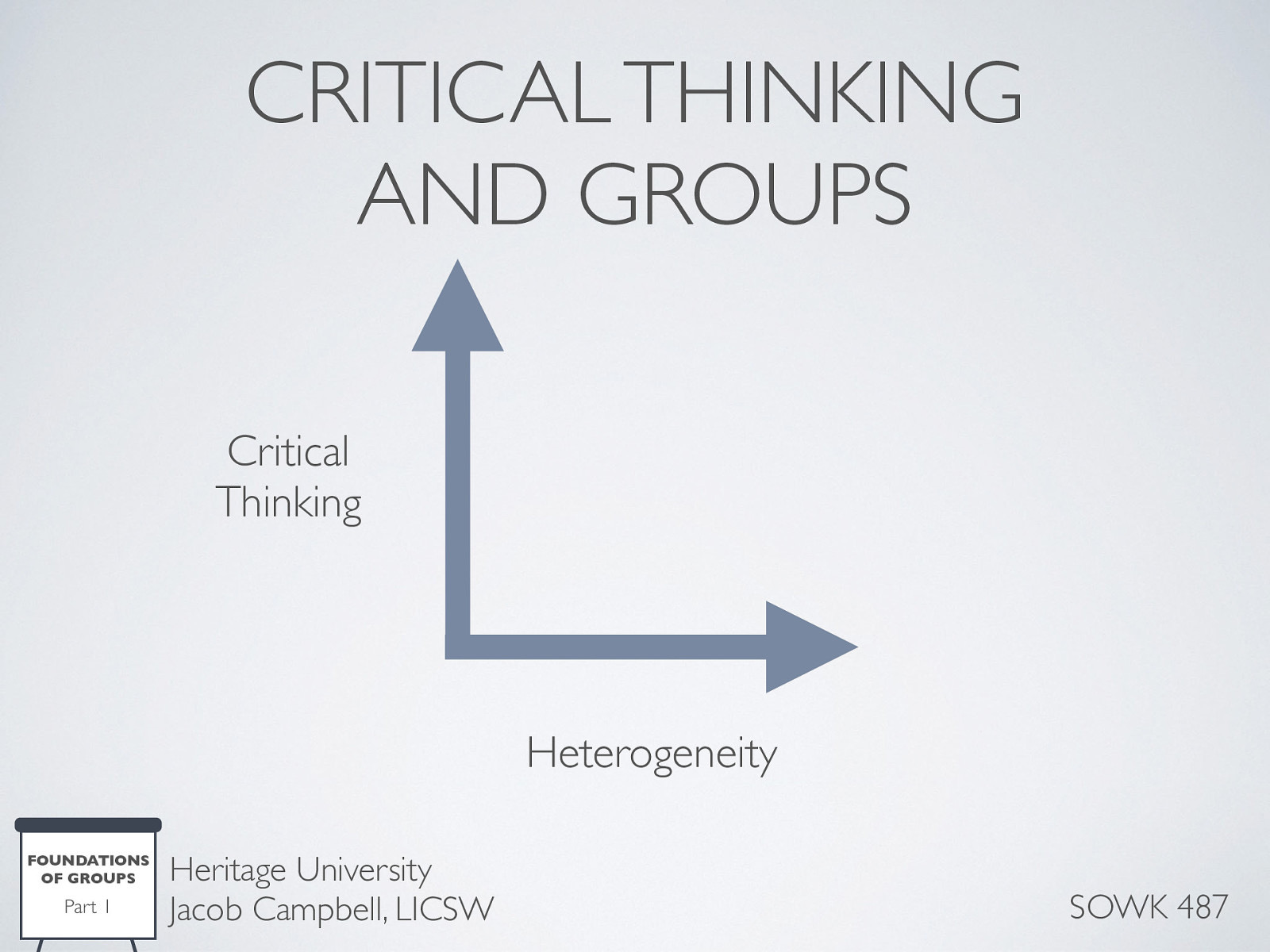
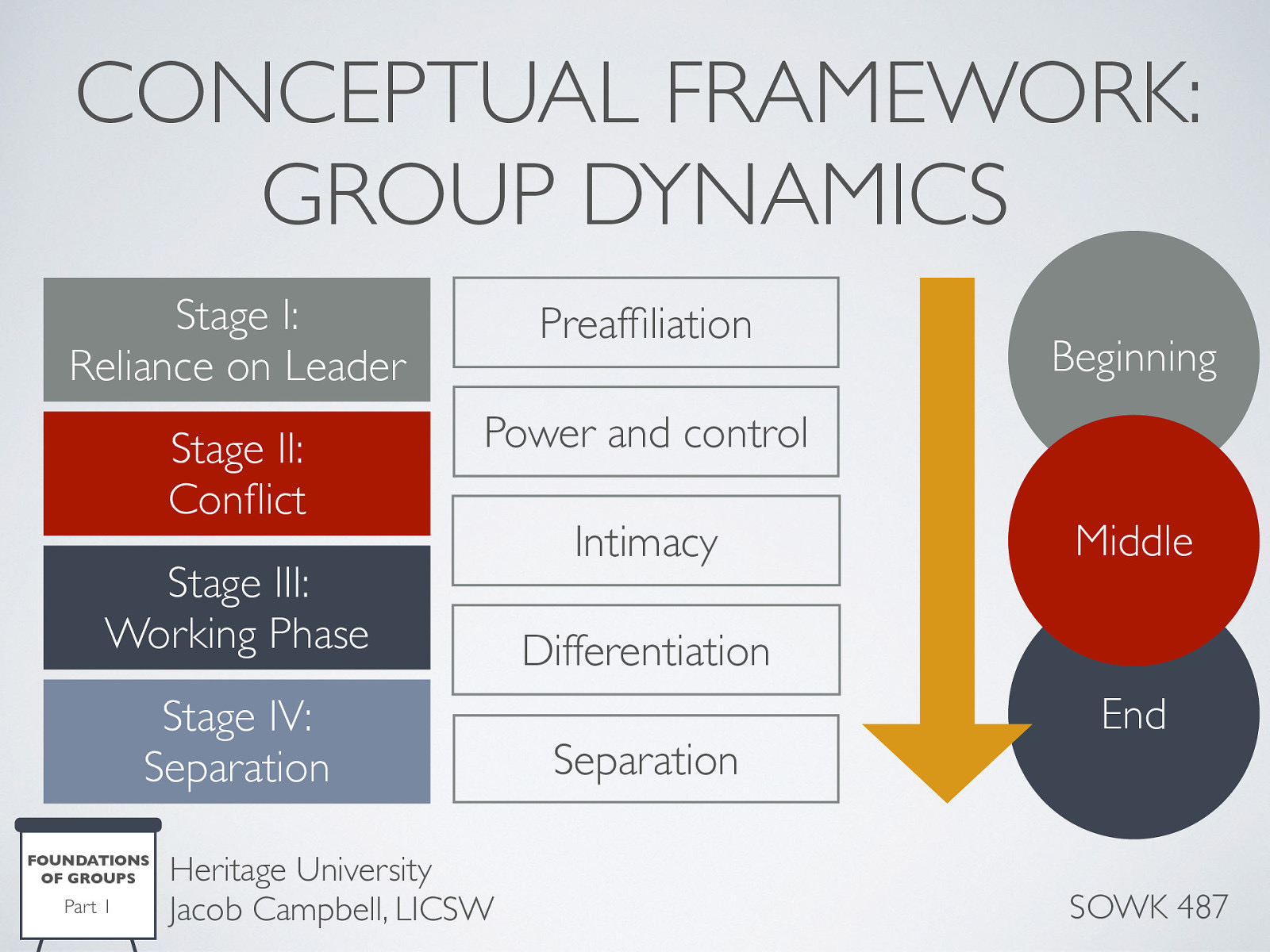
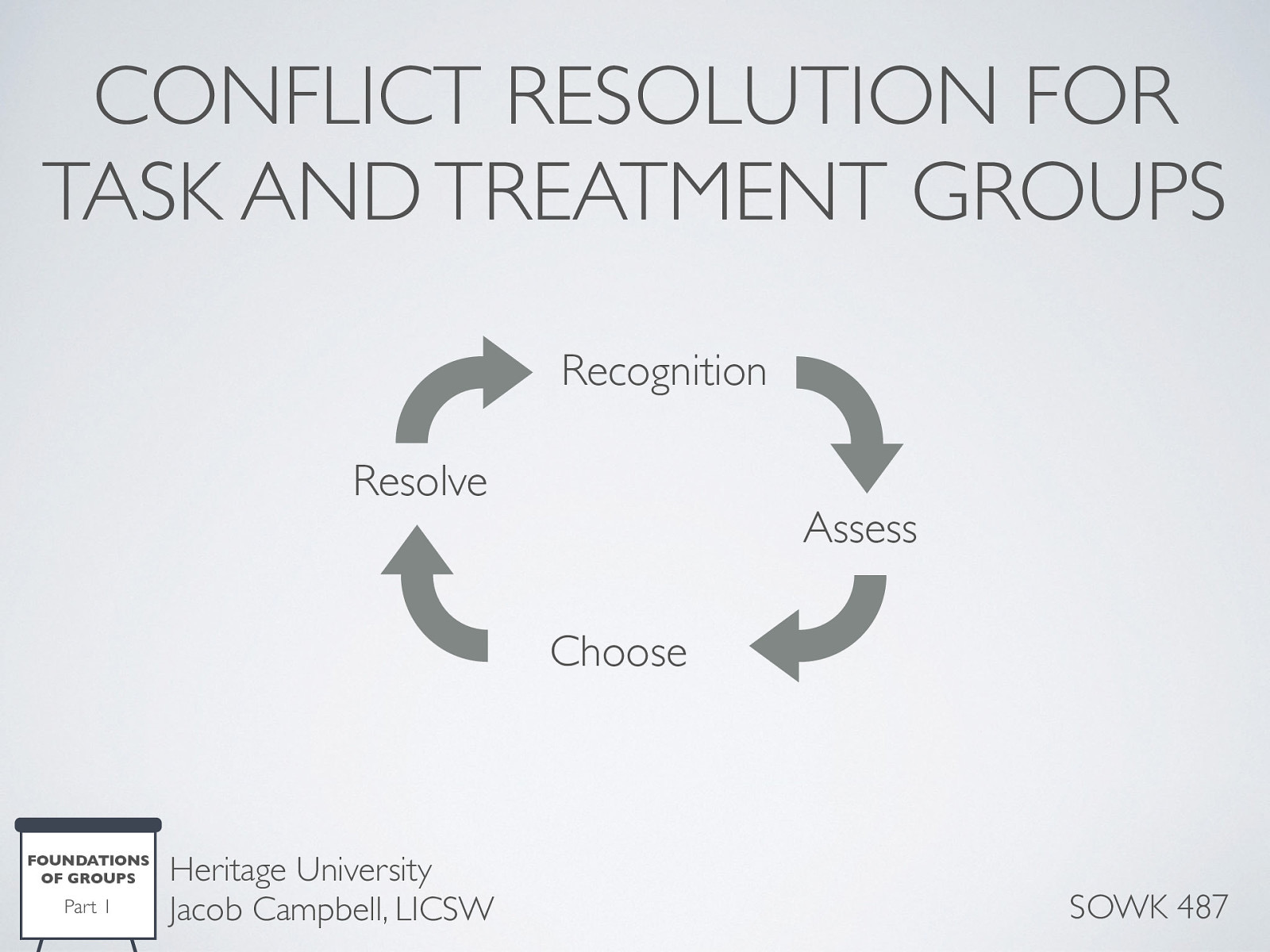
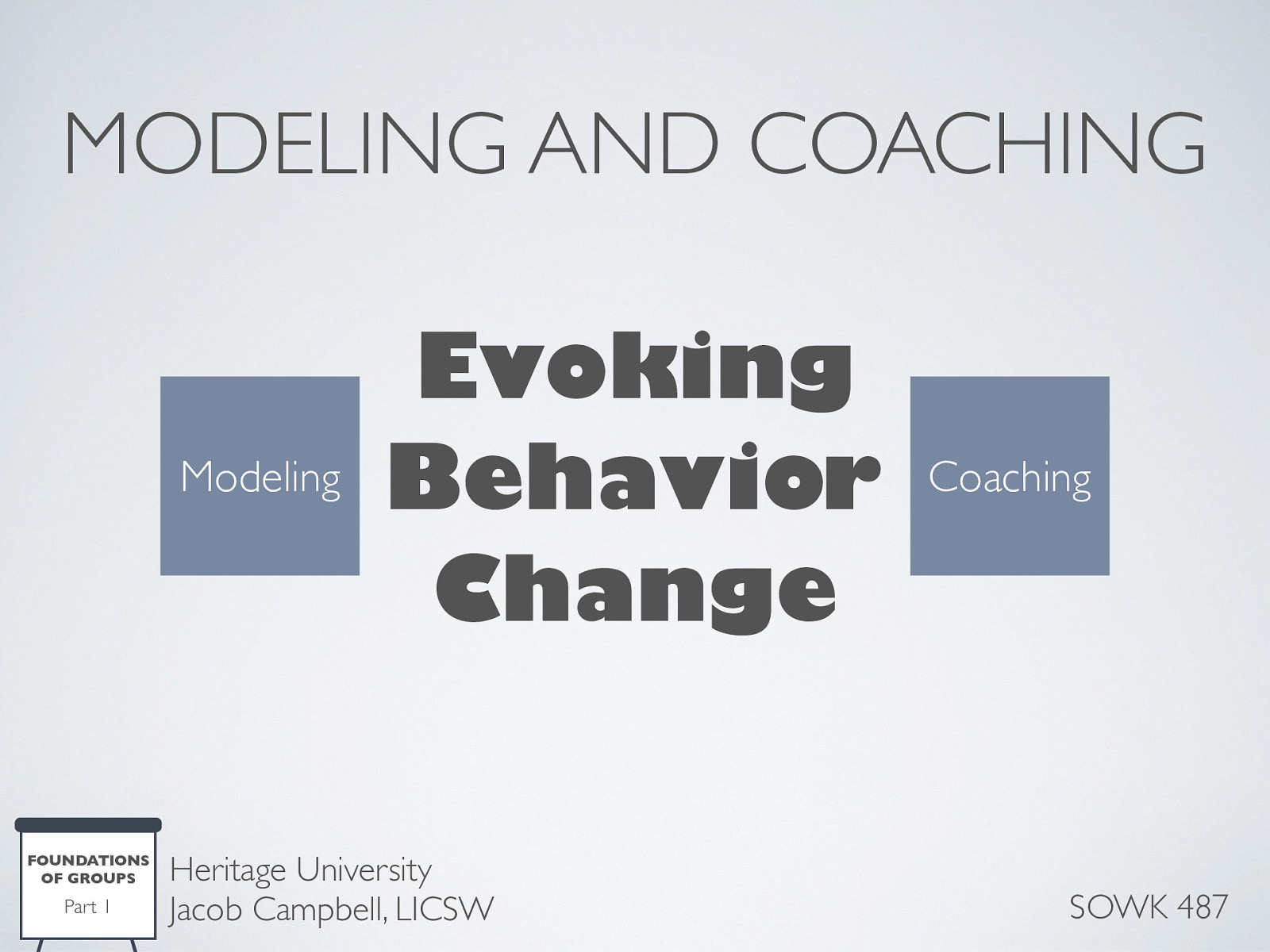
![Confrontation within a group tends to be more discomforting than confronting individuals on a one-on-one basis. [co-leading] A worker that determines that a member has engaged in behavior warranting confrontation has a responsibility to follow through and confront that individual. This situation provides a good opportunity to model appropriate confrontation for other members by: The worker engaging in nonblaming type of confrontation Pointing out the discrepancy How it affects the worker, for example, by using “I” statements. Another way is for a worker to involve the whole group and ask the entire group to take responsibility for problem-solving. As always, confrontation should be used judiciously and tactfully. One should have both empathy and respect for the sensitivities of the person being confronted.](https://presentations.jacobrcampbell.com/xFnMol/deck-6239-large-22.jpeg)
